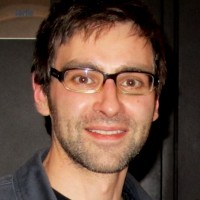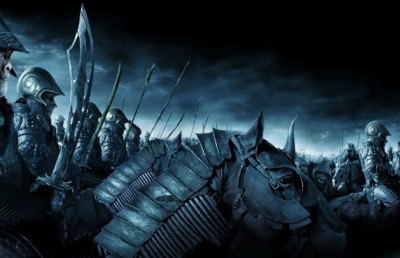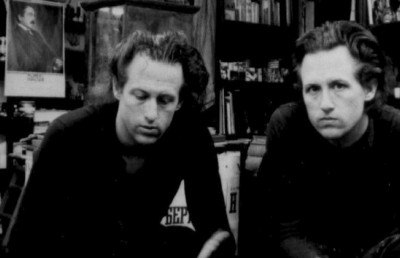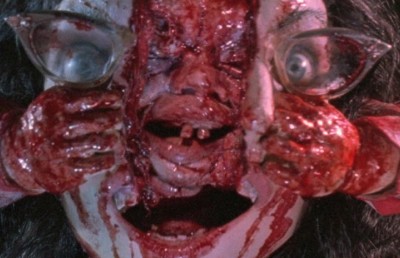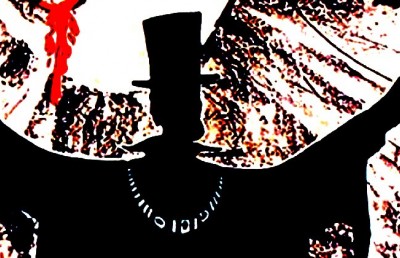Stan Brakhage in Montreal
Public Intellectual
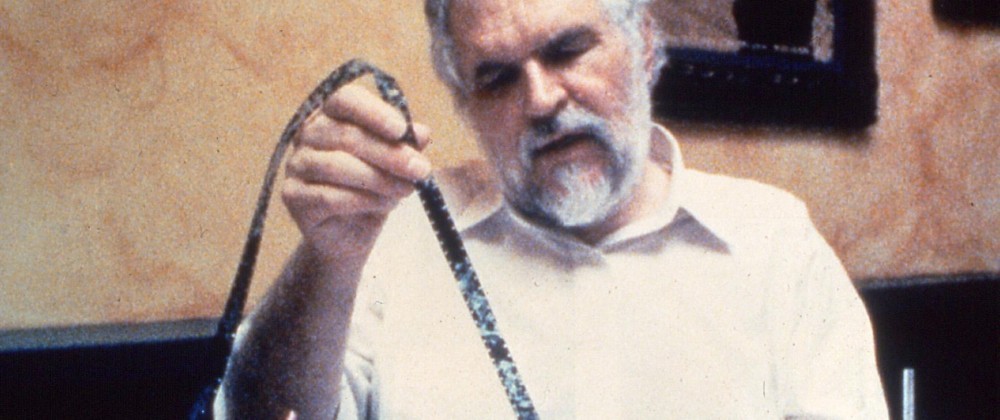
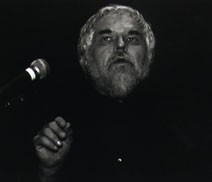
The event proved an unexpected success for the type of cinema commonly referred to as ‘experimental’. Even with the alarming indifference of local press (with a known narrow-mindedness but a disappointing lack of cultural curiosity), the screenings were full and the enthusiasm so palpable that few people left their seats during the discussion period after the films.
We have come to discover or better know an artist of great integrity, and the integrity is evident when inspiration appears unceasing and the vision consistent. The 24 films in the program made us experience some unique and sometimes intense cinematographic moments. It would be impossible in this journal to deliver a complete and convenient account of these few days; and, frankly, too overwhelming to erect a critical summary of all the films or carry out a discourse on the filmmaker in an elaborate essay. What matters, in any case, is to share some ideas and facts that remain vivid and constructive within the mind. Therefore, in the three senses of the word “present” : brief journal of that which was, of that which was given and received , and of the cinematographic experience of the moment.
Experimental or Poetic Cinema?
Brakhage : “I prefer to say poetic film, it is less confusing than the term “experimental” because we can make an analogy to poetry with respect to the novel and literature.” We can clarify that it is a question of the poetic form in respect to the novel form, since we can always speak about the poetry of a narrative film or a novel. The difference when it comes to storytelling in either literature or the poetic form, with either words or images, is that in the poetic form, morseo than literature, rhythm, color, forms and sensorial effects become the working materials that incarnate the content, inseparable from the experience.
Silence
The majority of Brakhage’s films are silent, without a soundtrack. It is a rare experience to be in complete obscurity with other spectators. It is a little uncomfortable at first. We can hear the person next to us breathing, suppressed coughs….But in the end we become accustomed to it, even gaining a strange telepathy and the impression of sharing in everyone’s gaze. We almost seemed to attain a mysterious consciousness of other people’s bodies during the screening of The Act of Seeing with One’s Own Eyes, a documentary in an autopsy room, where every head in the darkened theatre was riveted on the silent screen imagery of corpses being opened and separated into pieces.
We can speculate that these viewing conditions participate in intensifying the sense of sight. Certainly, especially with the abstract films that are painted by hand, often image by image, we perceive through our sight an aesthetic experience very close to music. We listen to music because there is movement, order, rhythm, and our eyes are taken by these films for these same qualities, and because this movement responds to something within us.
Toc, toc, toc, Brakhage taps the side of his microphone with his hand. He does the same gesture without hitting the microphone. Brakhage: “In which of these two gestures was my hand more present to your eyes?”
This radical choice for silence is, for Brakhage, not paradoxically, in proportion to his passion for music. He was a student of John Cage, flirted with Varese, is fascinated by Stockhausen, and greatly inspired by Xenakis.
Chance Operation, but….
Reels A and B
John Cage developed a method of musical composition by ‘chance.’ For Brakhage, especially at the level of montage, to compose by chance could be a way of beginning a work, of finding a point of departure, but it can not constitute a final creative stage. For example, for the film Dog Star Man, an epic poem which was directed over a 4 year span (1960-64), he began to edit reel A according to chance formula, just to obtain an outline of the form, of the initial movement. But he felt the necessity to go beyond this. So where for Cage this reel A could be a film, Brakhage began to work with reel B, in response to reel A, to give him the groundwork of meanings to be integrated in superimpositions at a second level of montage.
Jackson Pollock
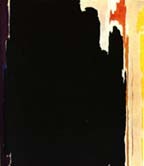
Painting by Clyfford Still (1951)
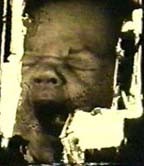
Dog Star Man by Stan Brakhage (1962)
We sense in the pictorial quality of Brakhage’s films, and as a part of his generation, the strong influence of American Abstract painters, especially the New York school. We can detect a similarity in the plastic quality of some of his films with the painting of Clifford Still and Hans Hoffman, but without a doubt the greatest influence on Brakhage is Jackson Pollock. Brakhage had the following anecdote to recount:
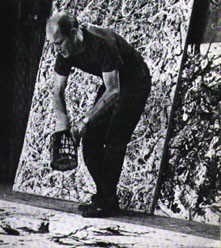
Jackson Pollock
Brakhage: “I met Pollock one time when I accompanied a friend who was invited with other critics to go see some new paintings in his famous Long Island barn. Evidently, Pollock was dead drunk, immobile and silent in a corner. After a moment, while looking at the traces of paint with which Pollock covered the canvas that was stretched across the floor, one of the critics risked a few words, talking about “chance operation.” Pollock, awaking slowly from his drunken stupor, repeats the words, ‘Chance operation?’ He then takes a paintbrush, dips it into a pot of paint, and with one movement of his arm flings the paint across the length of the room squarely hitting the doorknob!”
Difference Between Art and Pornography
Sexuality occupies an important place in Brakhage’s oeuvre, something which has caused him friction with American law. Certain films could have cost him 20 years in jail. These problems began in 1957 with Window Water Baby Moving. The film lab that developed the film sent him a document which Brakhage had to sign to consent to the destruction of his film because it was deemed pornographic. “A funny oxymoron,” notes Brakhage, “a pornographic birth film.” To save the film, a doctor had to come to his defense, attesting that it was a scientific film.
While living for some time during his youth in Los Angeles, Brakhage was offered $75.00 a day to shoot pornographic films. Brakhage : “I never considered making pornographic films. I did not think there was necessarily something bad about them, and it would have been a lot of money for me at the time. I refused because something in my mind told me that it would be better not to touch this genre of film, because I knew that one day I would want to do something serious on sexuality. Much later I understood that the difficulty with this subject was in representing sexuality in such a way that was not too evasive, but without being too explicit and sexually stimulating, like pornography. We can talk about art if we succeed in making the spectator feel their sexuality without giving him an erection.”
Home Movie
Brakhage : “At the beginning of my career I watched with great attention many amateur and home movies. When I realized that in certain films we can see a consistent slight trembling of the frame, this had a great effect on my way of envisioning the art of cinema. When he tried to keep still with his hand-held super 8 camera, this slight trembling was the beating of the filmmaker’s heart, the emotions of this beating heart. When, for example, filming his children. Incidentally, in French you also use the word amateur to name a person who loves something. Capturing an image while in the act of love has become an important notion for me. In fact, all films are ‘home movies.’ Even in Hollywood, they base their home movies on the people there, the places. They are also, at best, amateurs, only they go to great measures to mask this!”
Optic Nerve
When watching a Brakhage film our eyes are engaged at two levels simultaneously. There is the subject of the image and at the same time all the work on visual form and rhythm which the internal process of our eyes engages in the act of perceiving image and movement. Displacement of the focal point in the layers of superimpositions, shot transitions that engage processes such as persistence of vision, retinal retention, light fluctuations, emotive affects and physiological color vibrations…..Brakhage talked about his interest in the optic nerve and ‘hypnagogic’ vision, forms and colors that we see with closed eyes (‘closed eye vision’). ‘Brain Movies,’ according to the expression coined by his poet friend Michael McClure. According to Brakhage, if we quickly shut our eyes, or if we rub our eyelids, what we see is like optic nerve ‘feedback.’ Therefore he tries to represent, using a variety of means, all that constitutes the movements of the internal vision apparatus, the predisposition to perceive beyond the visible world, our internal light (we already know that colors are produced by the brain and not present in objects). Brakhage : “It is this ‘moving visual thinking’ which I want to represent, and which I want to share with my films. It is maybe close to what a foetus, which has never seen the exterior world, would dream! And share this internal movement. Which may be similar to primitive man who, when moved, would hit his chest to respond to his beating heart, or another would begin to hit on something, and rhythm and music appeared.”
Art and Social Engagement
Stan Brakhage perfectly exemplifies the balance between the artist incessantly engaged in the creation of art and the socially engaged citizen. One must clearly be led to reflect on these two things as being essential though potentially separate. The majority of his films derive from a personal and poetic universe, and many, such as the hand painted films, being purely ‘abstract.’ But not all of his films are like this. The montage exercise film with recycled images, like Murder Psalm, a meditation on violence, is rich with cultural reference. Evidently, it is a reflex, one often reaffirmed in an art school environment, to consider abstract art as “outside the pale of the real world.” This was the subject of a question posed to Brakhage by a spectator. His reply,
Brakhage: “It is important for me to be aware and active with respect to the unrest and injustices in the world in which I live. But I know that in my work if I were to make a film on such and such a political question, it would be walking on the other side of the line which has been given to me to make art. Certain black poets were taken at a moment in time to give themselves completely to the defense of the rights of their people. I respect that, but what they wrote was no longer poetry, and poetry is also necessary. An artist must know themselves to remain honest to their work. I would not feel the same confidence in expressing through my art this type of political question. I also feel that those things which we can respond to immediately, quickly, and the changes that occur as a result, can just as easily dissipate and revert back just as quickly. I would rather believe in the timeless quality of art, and that if a work of art can touch people or make them reflect on things one hundred years from now, this would be more productive for humanity.”
We should also not forget that the films dealing with sexuality, or the one about autopsy, in fact incarnate, with respect to Brakhage’s filmic vision, a person in conflict with conventional moral views and popular culture. Also, are not the hand painted films in the context of production practices of commercial cinema and dominant ideologies themselves an act of resistance?
Translated from original French by Donato Totaro. For original French version click here: Stan Brakhage)
Stay tuned in the upcoming months for a full transcription of Brakhage’s introductions and post-film responses in Offscreen.

